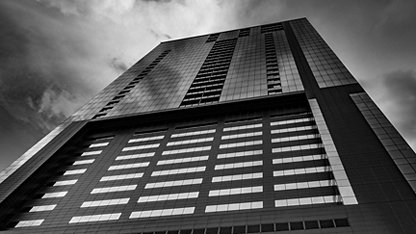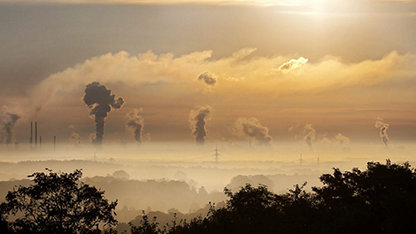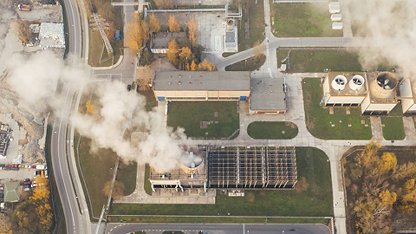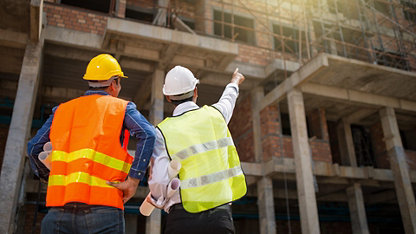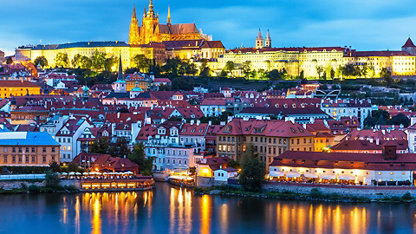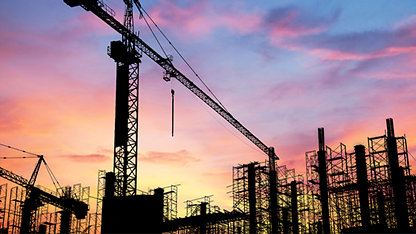Everybody who cares about climate change has a moment of clarity about the scale of the challenge facing us.
I’ve had many of them over the past 20 years writing about the subject. One of them was understanding how much coal we burn in the US. I was standing on top of a mountain in West Virginia looking into a mine and seeing the coal coming out of it, realising that all these lovely iPhones and laptops that seem so clean are all largely powered by electrons generated from coal. Another was visiting Lower Manhattan after Hurricane Sandy hit.
It’s very clear to anybody who is paying attention that we’re going to miss the tipping points to minimise the impact of rising CO2 levels in the atmosphere; that we’re not going to stop or fix climate change in any straightforward way. So it’s really important that we start having two conversations: one is how we are going to reduce emissions, because the more we can do that, the more we can reduce future impacts; the other is about how we’re going to adapt, because we’re going to have big temperature swings and we’re going to have rising seas. The National Oceanic and Atmospheric Association reported in 2017 that by 2100, sea levels could rise by eight feet.
“You don’t need to have sharks swimming through the lobby of the Fontainebleau hotel for this to be a problem. ”
The economics of this is what is really beginning to capture people’s attention. As roads start to erode and communities have to start spending more money to repair the damage of rising seas, for example, this is going to have a big impact on property values. And as property values start to decline, this is going to have a huge impact on county, state and federal budgets, at exactly the time when revenues are falling because property taxes are falling.
In Miami, developers have told me off the record that they are already starting to think about moving their new development to higher ground. You don’t need to have sharks swimming through the lobby of the Fontainebleau hotel for this to be a problem. It could be a big storm, which is unexpectedly devastating. It could be when the trees start dying from salt water intrusion from below – reality is setting in that sea-level rise is not a single high tide, but a tide that’s going to get higher and higher, and that it’s not going to suddenly retreat. Once that starts happening in a place like Miami, it’s going to be very clear to people that there is no way back. So I think that within a decade you’re going to see some kind of big real estate adjustment.
People who have enough money that they can put their house on the market and just decide they’re going to move to Asheville, North Carolina, or somewhere else inland, will have a big advantage. People who are stuck at a job in a place at risk, who don’t have the money to sell up and move, they’re in more trouble. And these are often people who, if they do own homes, much of their savings and much of their financial worth is in those homes. And as those homes decline in value, this is going to widen the social inequities that we already see.

“Does it mean we’ll have the “Goldman Sachs Bridge” and the “Morgan Stanley Causeway”, and then, the “Apple Sea Wall”? ”
All over the world, we’re seeing less government involvement in fixing things. In the US, we already have a massive infrastructure problem, so the notion that the US government is going to spend billions and billions of dollars on rebuilding coastal real estate to protect cities and counties that are at risk is just not going to happen.
A lot of state and city officials that I’ve been talking to are beginning to get scared: the credit rating agency Moody’s has announced that it is going to take climate adaptation measures into account when it considers a bond rating for a city or a state. That makes money more expensive and that makes it even more difficult to fund the kind of defence systems and infrastructure changes that we’re going to need. Companies will start thinking: “Okay, is this going to be a good place in the future?” Pretty fast it becomes an economic downward spiral.
The big question for me is what role private capital and private investment is going to have in urban adaptation. It’s very hard to see how cities and states are going to have the money to deal with this without it. I don’t know exactly what the mechanism will be. Does it mean we’ll have the “Goldman Sachs Bridge” and the “Morgan Stanley Causeway”, and then, the “Apple Sea Wall”?
A kind of triage is where this is all heading. It will be: what do we want to save? They are building a sea wall in lower Manhattan – “The BIG U” – and they’re going to choose where it ends. It’s going to end roughly on 42nd Street on both sides of the island and if you’re on 44th Street, you’re probably going to be pissed off about that. There are going to be people who are behind the wall and people who are not, and that’s kind of globally what the story is going to be.
How open are we, not only to climate change refugees, but also to the changes in our world? This is the big question of our time. I think there’s hope. A lot of architects and urban planners are figuring out interesting, creative ways to live with water rather than trying to wall it off. The problem is: what are we going to do with a lot of the stupid stuff we’ve built along the water that isn’t easily adaptable, and will be vulnerable to the changes that are coming?



